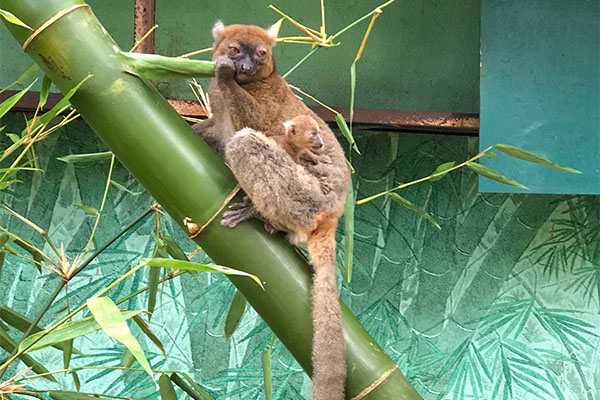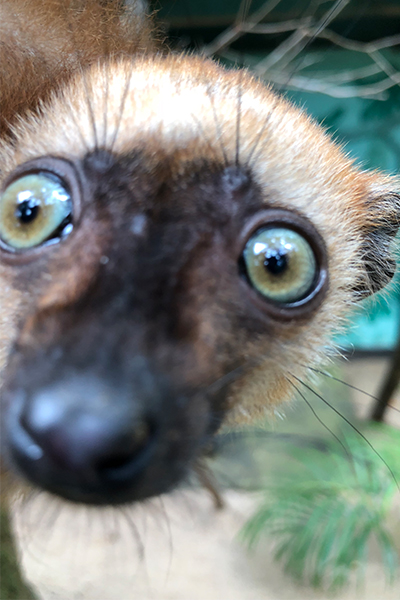Here at Perth Zoo, we not only talk-the-talk when it comes to wildlife conservation – but walk-the-walk.
We recently sat down with two of our zoologists, Jenna and Marty, to chat about their time volunteering with Perth Zoo partner, Madagascan Fauna and Flora which helps conserve wild lemur populations.
What inspired you to volunteer with Madagascan Fauna and Flora Group and what were you involved with?
J: I wanted to volunteer to learn even more about a species I have worked with throughout my career and their plight in the wild so I could better pass on their story to people.
At Parc Ivoloina, which is run by Madagascan Fauna and Flora Group, I was involved in behaviour observations on a blue-eye black lemur and her newborn infant. The blue-eyed lemur is critically endangered, so every individual is vitally important.
M: I was excited for the opportunity to be able be see first-hand how the funds raised at Perth Zoo contributes to supporting the conservation efforts of this critically endangered species in the wild.
One of my passions is animal enrichment, so I helped with setting up a managed enrichment schedule for a lot of the lemur species. Lemurs are a very scent-based species so one of the enrichment activities we included was the use of perfume in the exhibits to encourage their natural olfactory behaviour.
.jpg.aspx)
How did the volunteer experience shape you as a zoologist and conservationist?
J: As a conservationist, volunteering was both exciting and heartbreaking – exciting to see lemurs of all different sizes and shapes but devastating to witness the destructive impact deforestation has had on their home. Only 10% of Madagascar’s rainforest still exists making it tougher and tougher for the wildlife who call it home to survive. Being an active contributor to the conservation of these species is something I’m very passionate about.
M: As a zookeeper, the whole experience gave me an insight into how we can take certain resources for granted. We often use enrichment items such as plastic bottles and cardboard boxes – which are free and readily available – but in Madagascar plastic bottles are a high commodity, so we could not use them for animal enrichment. I had to put my thinking cap on and utilise other resources growing in the park for enrichment instead.

What do you want people to know about lemurs and their plight?
J: Lemurs are unique and endemic to Madagascar, so it’s vital we protect their habitat. Their plight relies on everyone caring not only about them as a species but in safeguarding their home to ensure that they are around for future generations.
M: I want people to know how special these animals are. They are found in one small part of the world, and cover so many different habitats. They can range from the size of a small child down to a tiny mouse.
Their survival relies on us protecting them and their habitat.

How can people help Lemurs?
J: Always be a conscious tourist. Never have photos taken with a lemur or any other wildlife – the reality is they have been poached from the wild for your picture opportunity. Do your research and don’t eat, stay, or participate with any hotels or restaurants that keep lemurs.
You can make a difference and inspire others to do the same.
M: Participate in sustainable ecotourism. If you can get up close and hold a lemur, you will most likely be participating in unsustainable tourism. Lemurs unfortunately are taken from the wild for the illegal pet trade.
You can also support organisations such as Madagascar Fauna and Flora by coming to Perth Zoo and doing a Lemur Close Encounter. You’ll go behind-the-scenes and learn more about the ambassador animals cared for here and the plight of their wild cousins.
You don’t have to be a zoologist, travel to Madagascar or volunteer with a wildlife group to help save lemurs. You can do it with just a couple of clicks by donating to Perth Zoo here.